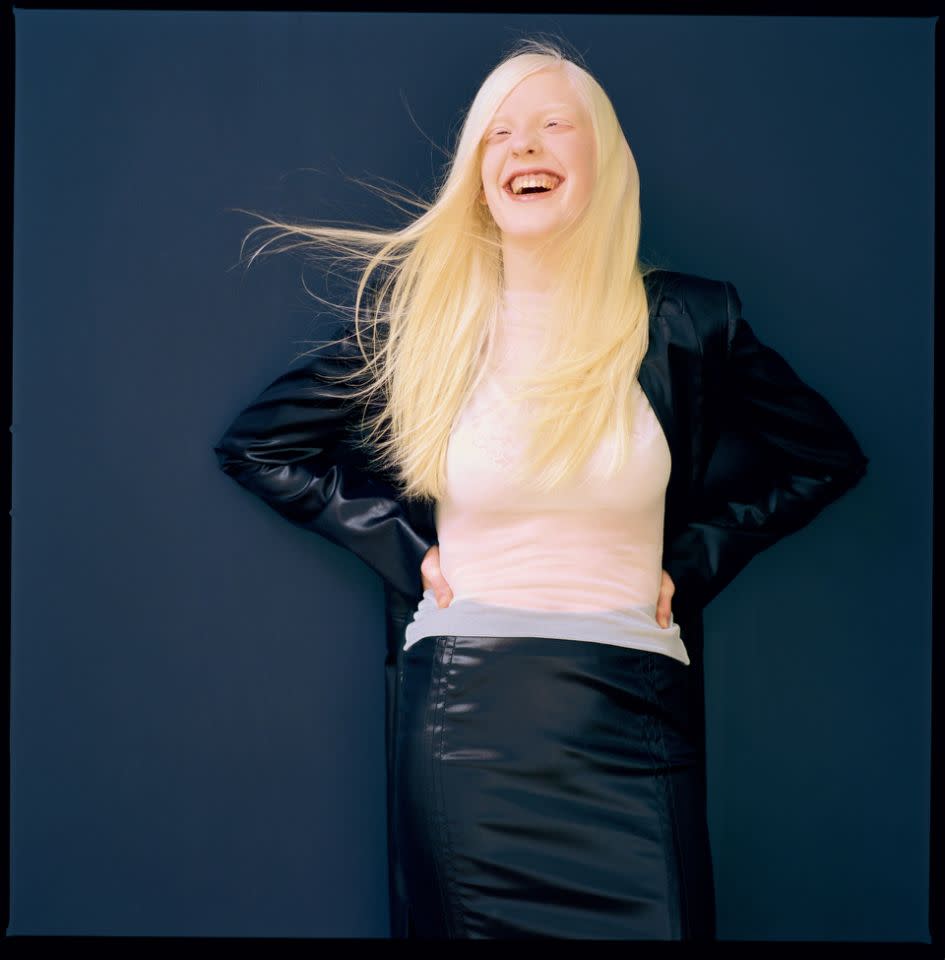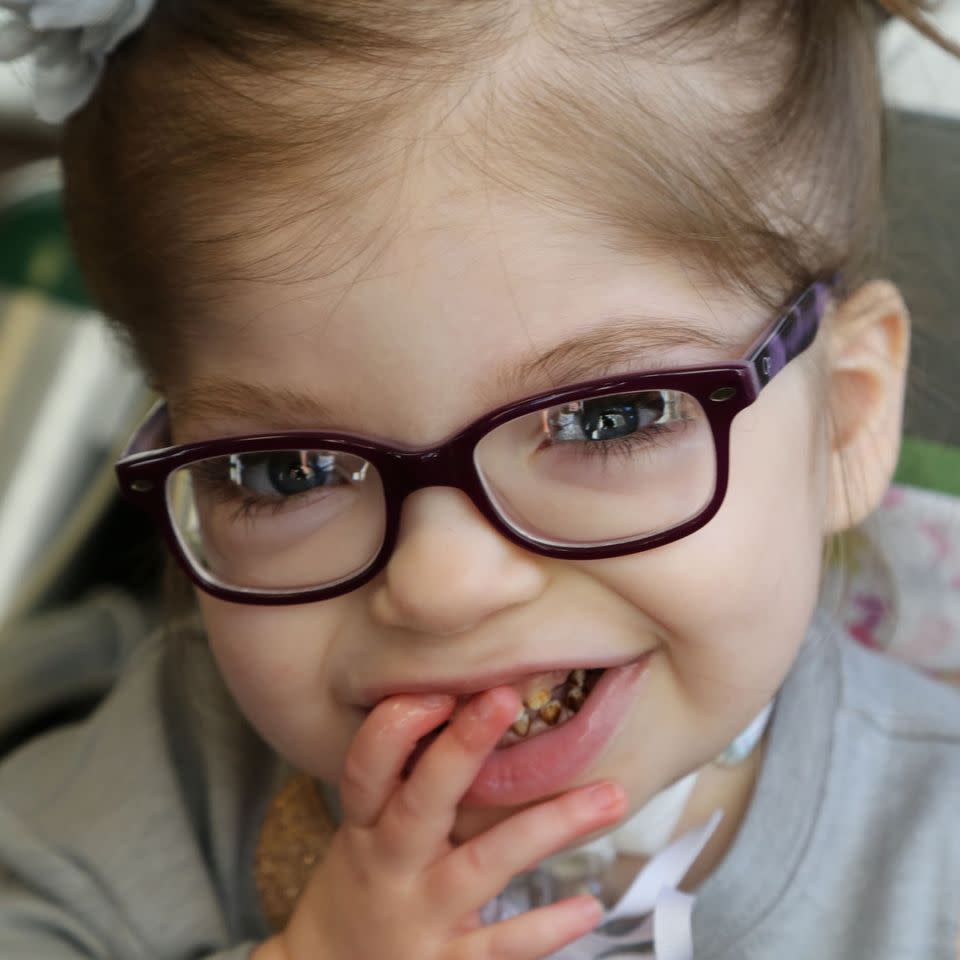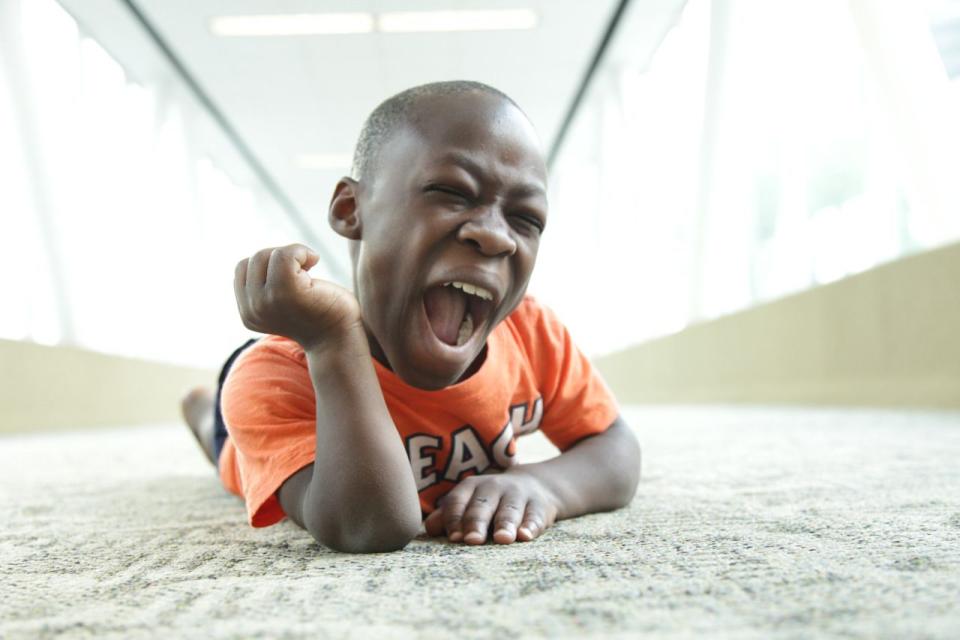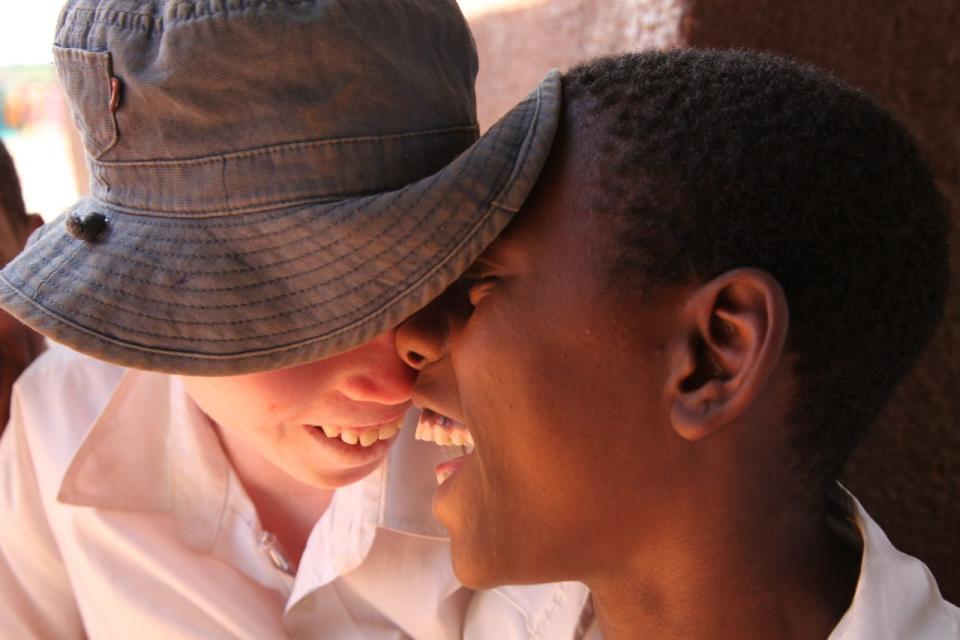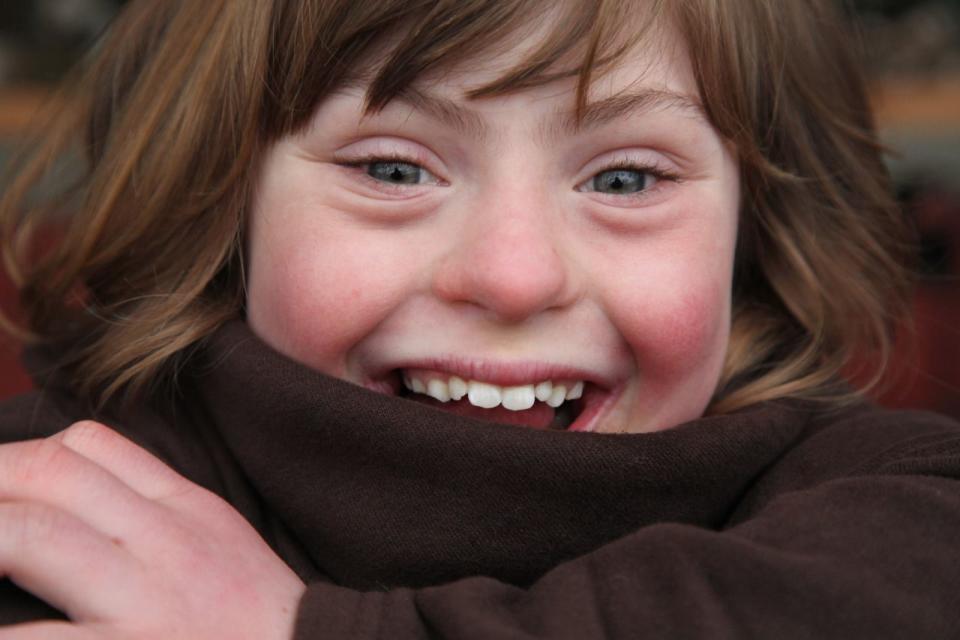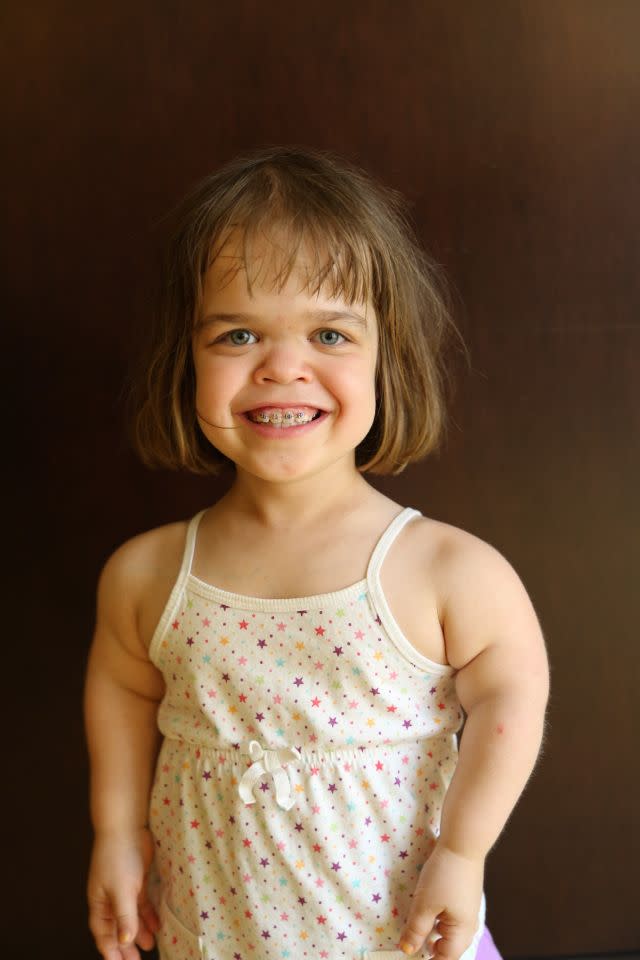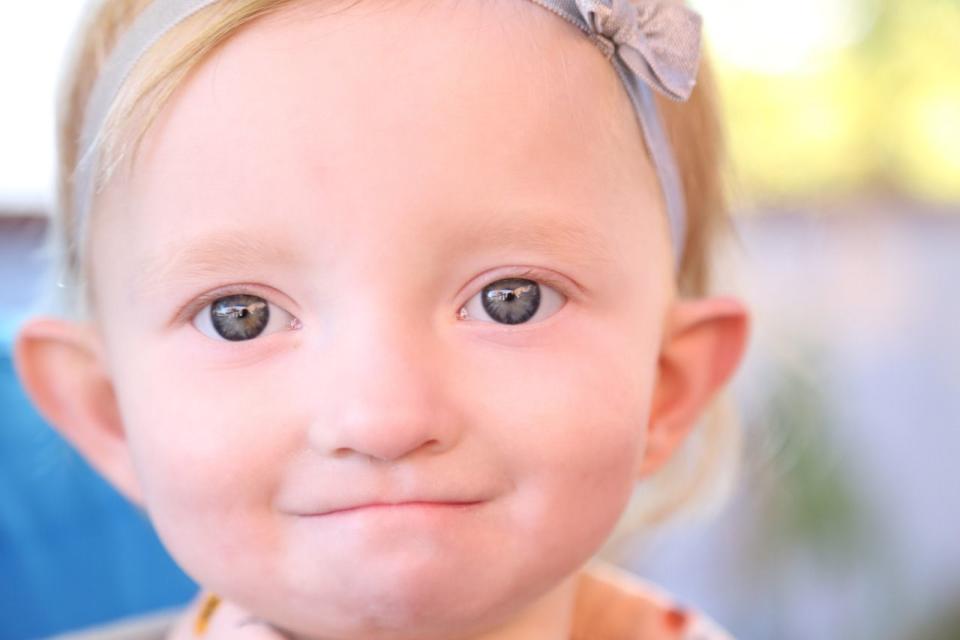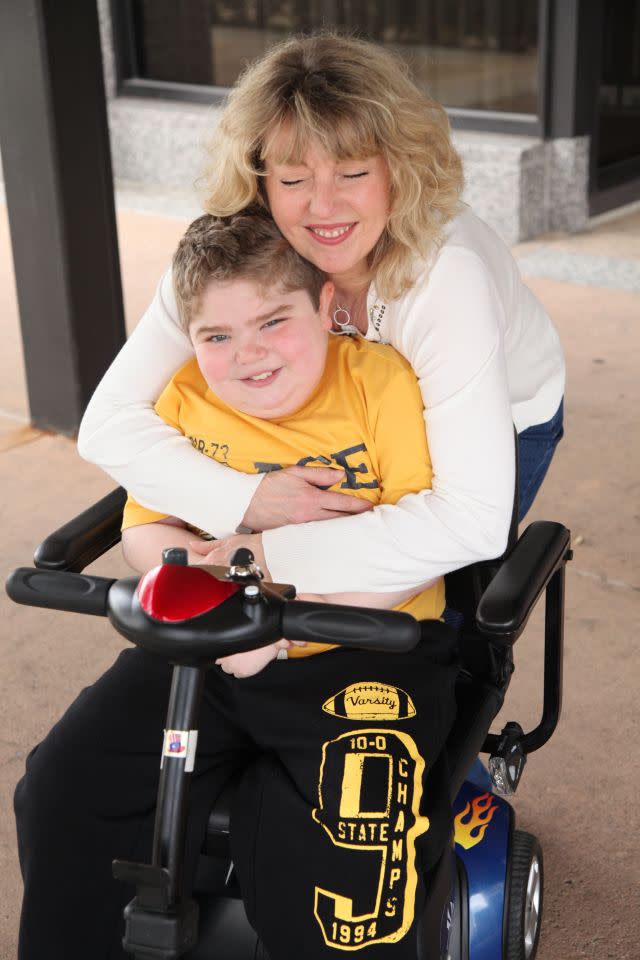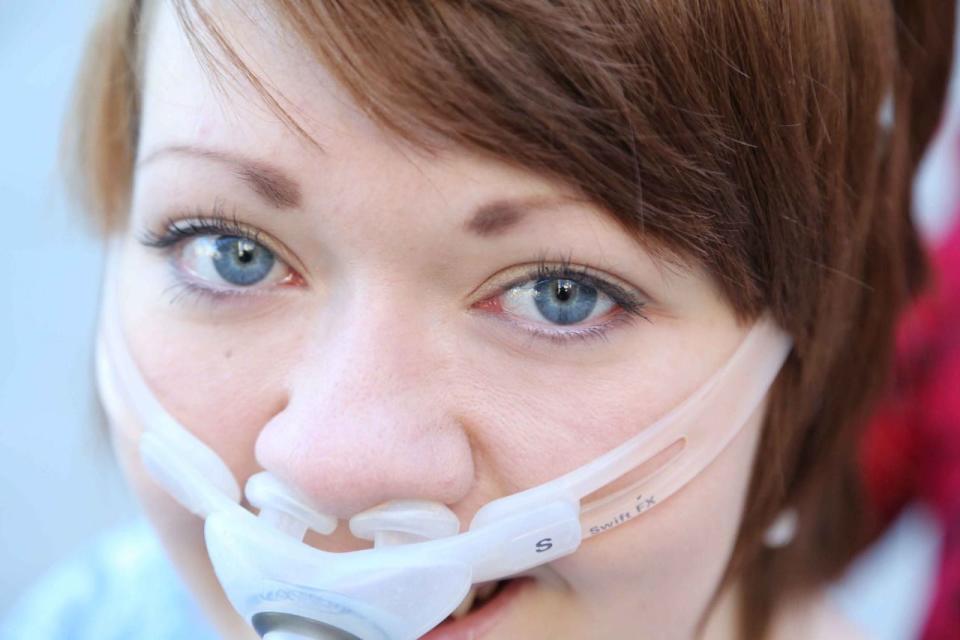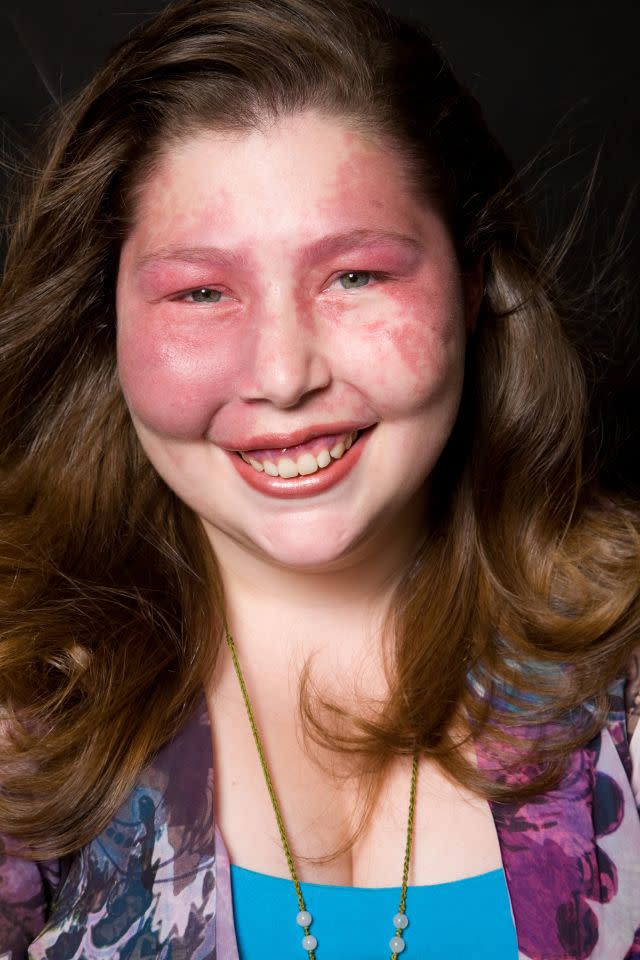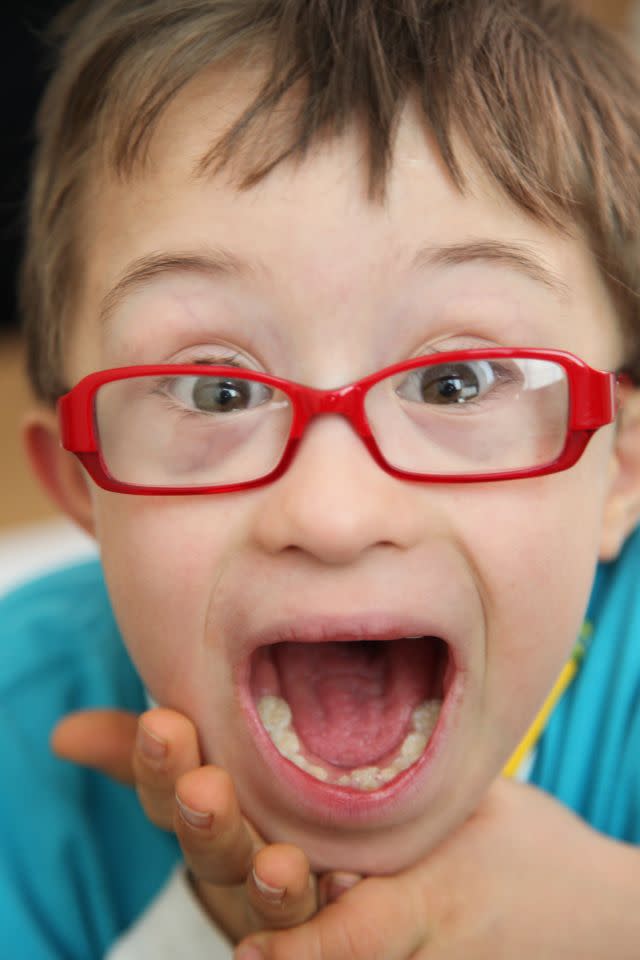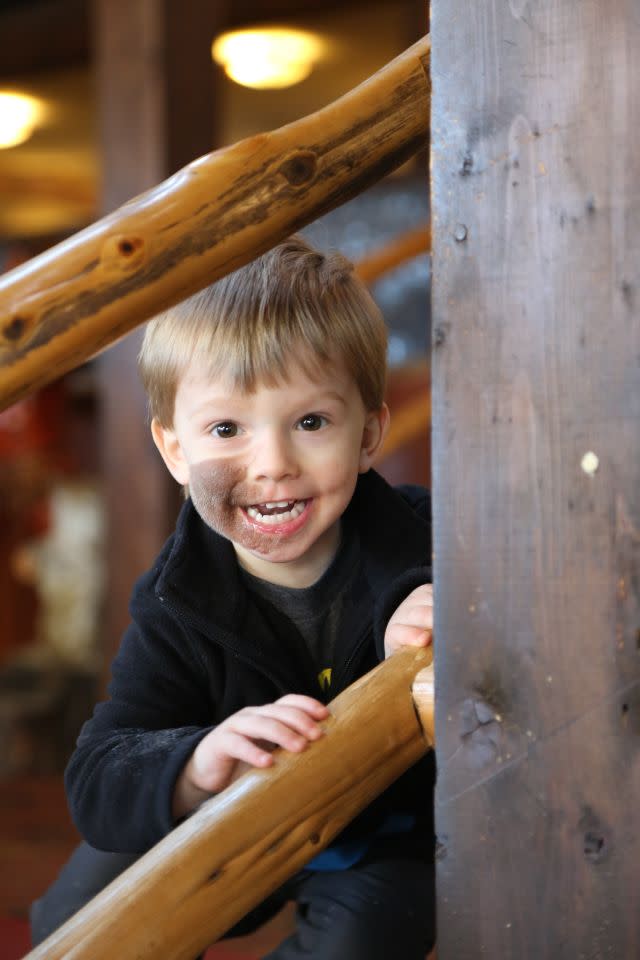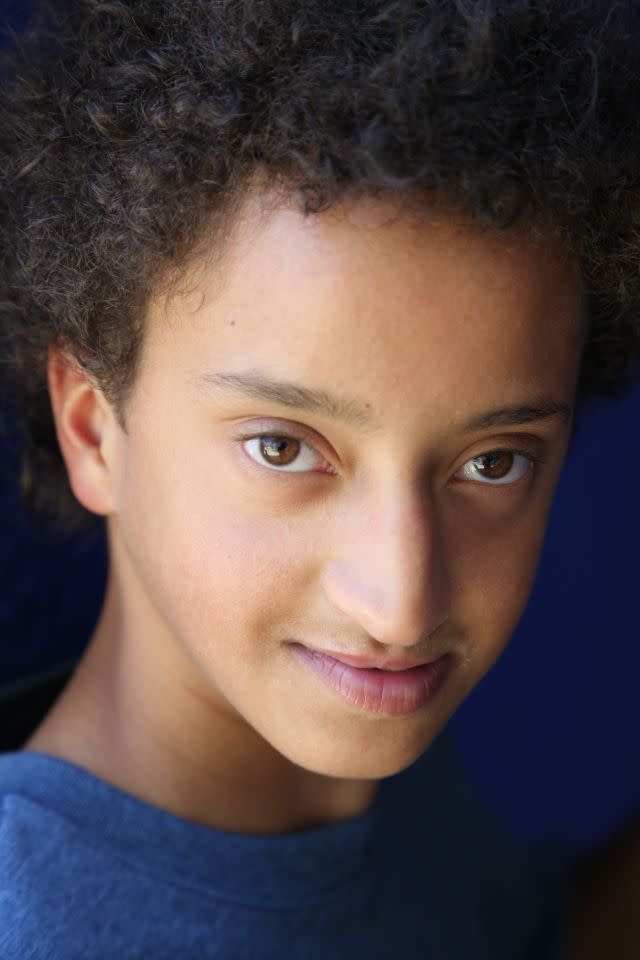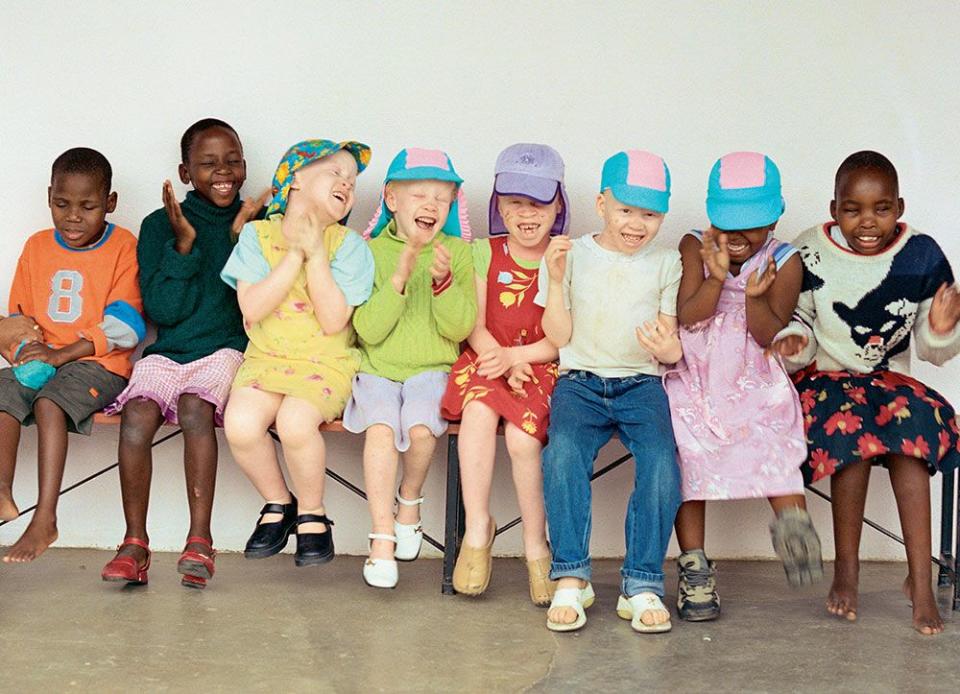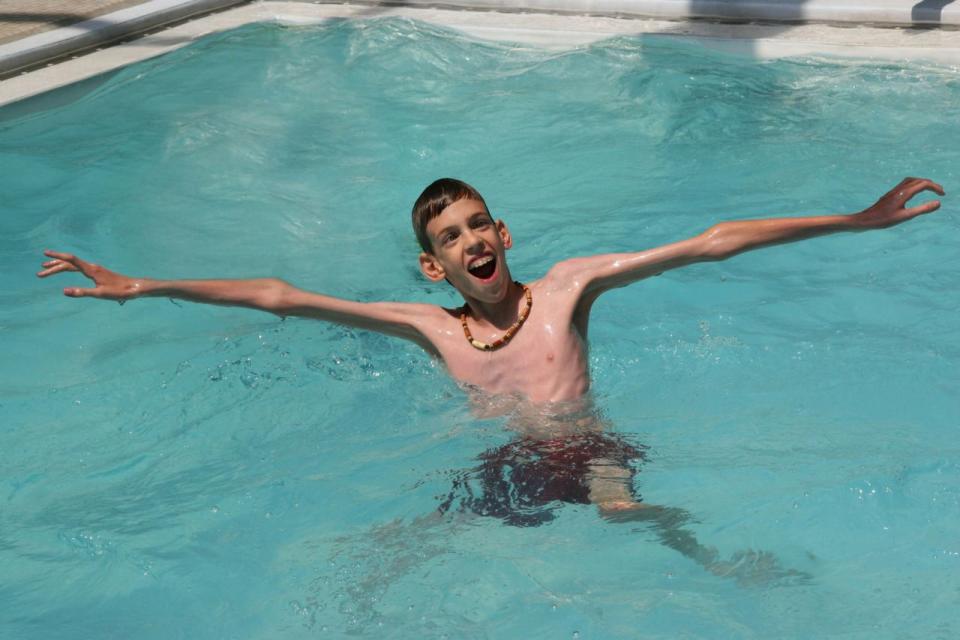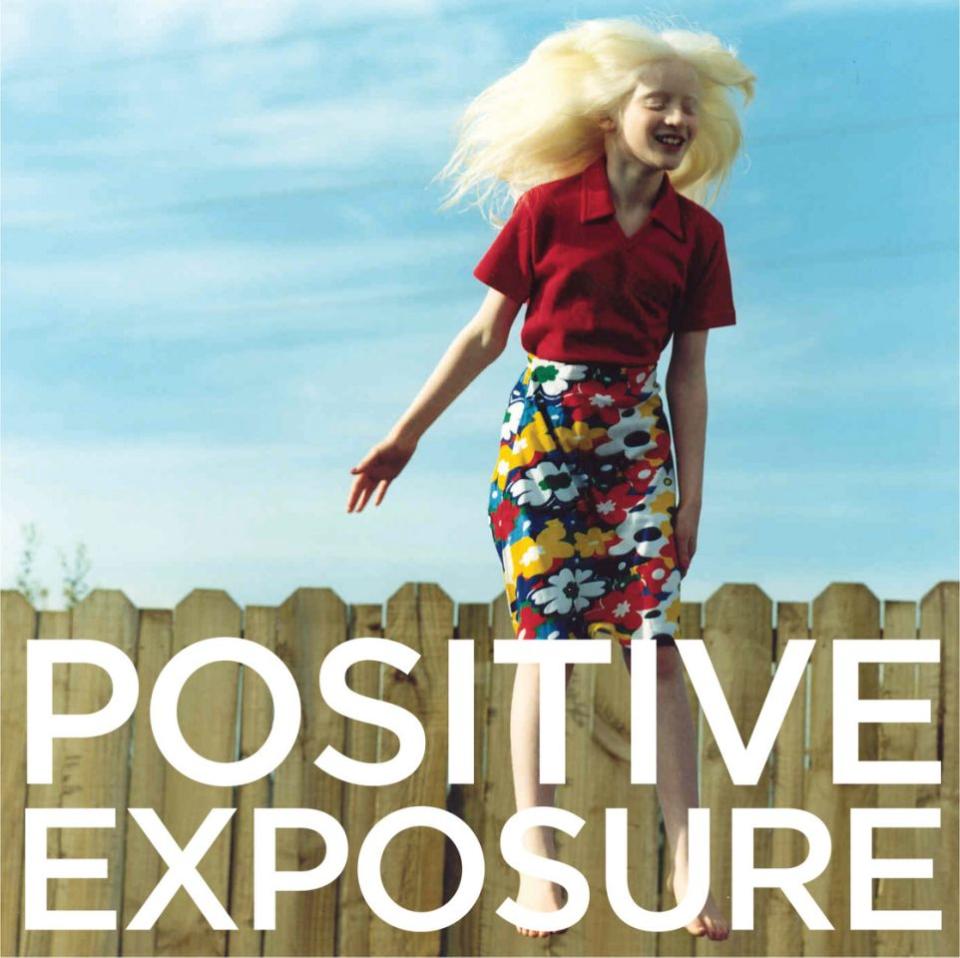How a Former Fashion Photographer Is Redefining Beauty Standards
All photos courtesy of Rick Guidotti
When you're a little person, the camera isn't normally your friend.
My girlfriend is a little person, and often when we're out in public, she'll see a stranger fiddling with a camera out of the corner of her eye.
"That guy just took my picture!" she'll whisper, and sure enough, I'll see someone surreptitiously angling a camera toward her from the hip and it will be too late. The photo is already taken, lost to the ether, where it can be used for who knows what.
Thankfully, at this year's Little People of America Conference in Boston, there was one man who was using his camera for good — and redefining beauty in the process.
Rick Guidotti has always been drawn to beauty in all its forms. First, it was the aesthetic of space that compelled him to photograph buildings while studying architecture at Temple University in Philadelphia. Then it was photographing his actor and designer friends when studying photography at New York's School of Visual Art. Finally, it was traveling the world between Milan, Paris, and New York, photographing the most beautiful women in the world at the height of the supermodel era.
But then a chance encounter permanently expanded his definition of beauty and forever changed his life.
The girl at the bus stop
About 18 years ago, Guidotti had just wrapped a photo session with Cindy Crawford and was leaving his Park Avenue studio when he spotted her. She was waiting for a bus at the corner of Park and 20th Street and couldn't have been more than 12 at the time. But with her long, flowing white hair and porcelain white skin, Guidotti had never seen anyone more spellbindingly beautiful in his entire life — he had to take her picture.
But like anyone who has had a random stranger approach and insist on taking a picture, the girl vehemently declined. She would get on the bus that day without ever knowing the transformative impact of their seemingly incidental interaction.
Undeterred by her reaction, Guidotti scoured bookstores, libraries, and the Internet for any information he could find on this girl and people like her. He learned she had a condition called albinism. Albinism is a rare genetic disorder characterized by a lack of pigment in the skin eyes and hair. Though it can cause susceptibility to skin cancer and vision problems such as sensitivity to light, Guidotti assumed he'd find great photos of such a beautifully unique characteristic. What he found instead shocked him.
"This kid was beautiful. I was fully expecting to find at least some beautiful photographs, but I was thrown across the room by how negatively presented they were."
What he saw was people with albinism in their underwear or naked up against walls in doctor's offices with black bars across their eyes.
"This was presenting humanity to me, and I was like, 'No it's not! These are images of despair and sadness."
It was then that he knew what he had to do. The fashion world was always telling him what and who was beautiful from moment to moment, and right then it was clear: There was so much more to the beauty spectrum than the industry could contain.
Expanding the beauty spectrum
"As an artist you need to be empathetic to all forms of beauty in however you present your art. Your art should always come from your heart, and when you have a preconceived idea of beauty, but are not aware of it, then you're almost following someone else's lead and not being true to yourself," says Guidotti.
He knew he was following established beauty standards by photographing supermodels, so he decided to move from showcasing models to showcasing the beauty of those with genetic differences.
"It was time to be my ultimate audience and get excited about sharing my discovery with the public at large. I was no longer going to be led around by the hand and try to live up to an editor's idea of beauty or a fashion industry standard. I realized I had to trust my own instincts, because as an artist that's all I have."
So he approached the National Organization for Albinism and Hypopigmentation [NOAH] and asked if he could photograph their members — showcasing them in magazine articles and exhibitions just like he'd done while shooting models — with the ultimate goal being to show the world what he saw at that bus stop.
A revolution in positive exposure
Initially, NOAH was not on board. The organization was very skeptical and concerned about the exploitation of its members. After all, those with albinism are routinely portrayed as evil and sinister characters in the media. You may remember the religious assassin in The Da Vinci Code, the dreadlocked henchmen in The Matrix Trilogy, and the savant who killed his mother while in the womb in Powder. It was no wonder NOAH was a little hesitant, but these photos were different.
"I'm an open book, and my heart is always on my sleeve. I don't take photographs. I collaborate with my subject on the images, and if there are people out there who do think I have an agenda, all they would have to do is be with me for two seconds and they'll see where this is coming from," says Guidotti.
Eventually NOAH did see where he was coming from, and as Guidotti started taking the photos, amazing things began to happen. One girl, Christine, walked into his studio all hunched over ? not wanting to make eye contact. Guidotti kept insisting she was beautiful, but after years of bullying and torment at the hands of her peers and her community, she didn't believe him.
"It took holding up a mirror to her and saying, ‘Look, you'll see!' When she looked in the mirror and saw beauty in that reflection that changed everything for her. Of course, she needed to change the way she saw herself. Her community needed to change the way they saw her and it created a ‘change how you see, see how you change’ philosophy," says Guidotti.
"I knew instantly she was going to walk into school the next day not with her head down and shoulders hunched, but with her head held high, because once you're enriched like that and you see your beauty and it's power you don't shift back — you stay empowered."
Guidotti has been empowering people with disabilities through his photography ever since. As people began to see their kids open up through the transformative power of having their own genuine beauty reflected through a professional camera lens, more and more families insisted that Guidotti take their child's picture and that first opportunity snowballed from the next, into the next, into the next.
Soon Guidotti found himself photographing all kinds of people who happened to have differences, first across the genetic-disorder spectrum and then expanding to photographing other disabilities. In 1998, he founded Positive Exposure, a nonprofit organization with the mission of changing public perception of people with disabilities and genetic disorders through photography, film, and narrative.
"Every time I meet Rick, he compliments me. Each time, he makes me feel more confident in my own skin. I think it's important for all people with physical differences, to realize how beautiful and unique they are," says Becky Curran, president of the New York Chapter of Little People of America, who recruited Guidotti to speak at and photograph the LPA Fashion Show she co-hosted in Boston at this year's conference.
Much like Positive Exposure, Curran created the LPA Fashion Show to encourage LPA's members to feel confident with their own image and strut their stuff. This year, more than 70 people participated — from kids to adults and families. All of them represented a variety of dwarfism types and a variety of physical abilities.
"Rick reminds us that we have a purpose and we were all put on this earth for a reason. We are all beautiful and should feel confident. The fashion show is another reminder. We couldn't have asked a better person to set the tone and introduce the 70-plus runway models."
Beauty and beyond
These days, Guidotti is moving past empowerment through photography and taking Positive Exposure to the next level. Not only is the organization releasing its first photography book called Change How You See, See How You Change featuring 150 photographs of those with genetic conditions that Guidotti has photographed over the years, but the organization has also set their sights on changing minds in the medical community and making sure those black bars in medical text books are things of the past.
This new initiative for medical schools is called FRAME (Faces Redefining the Art of Medical Education) and features brief six- to eight-minute films presenting various genetic, physical, or developmental conditions in a very different way.
"As presented not by the scary medical text books with their scary medical text but by someone living with that condition and their families," says Guidotti.
"We're really trying to provide opportunities for med students and the health care community to really get to see people with a variety of differences ? see them laugh, giggle, and interact. We're putting them front row and center in medical education, the humanity."
Their goal is to create a permanent center in New York City that celebrates diversity. Called the Positive Exposure Center, it would be a place where diversity and difference would be celebrated through the arts. Not a museum, but a place where theater and arts programs for those with differences could ply their trade or rehearse. A safe space where no one would be mocked any longer and the public would get an opportunity to educate themselves and internalize diversity. It would a place for dialogue and action, not secrets or spies, a place for sharing and openness, not silence and fear, and a place of love and acceptance, not hate or bigotry.
"Every student comes through New York City at one point or another — why couldn't they come through the Positive Exposure Center and learn what diversity really looks like, what it feels like, and what it sounds like. What it really means to be inclusive and build an inclusive community?" asks Guidotti.
Right now, Positive Exposure is trying to really identify the players who can make this dream a reality, so if this is something you'd like to be a part of, email rick@positiveexposure.org and donate the funds necessary to make it happen through this link.
Let's keep in touch! Follow Yahoo Beauty on Facebook, Twitter, Instagram, and Pinterest.
